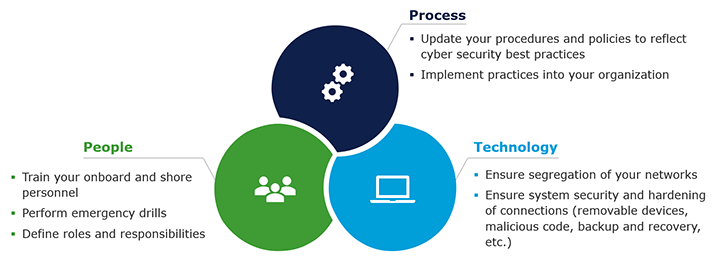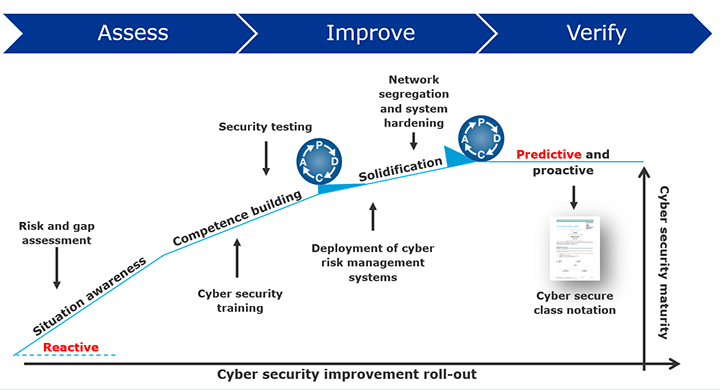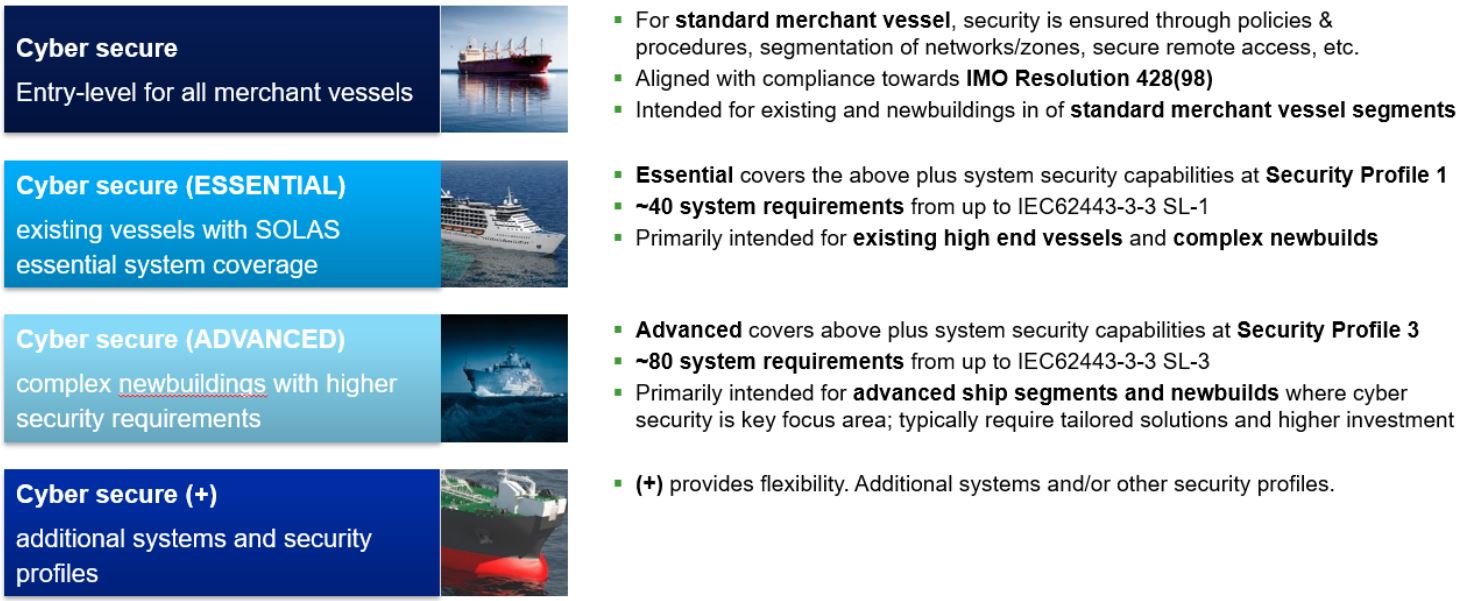Securing processes, people and new technology
Vessel systems are becoming increasingly complex and are integrated with other systems both on board and onshore. This requires an extended risk and safety assessment involving cyber security, with the aim to continuously ensure the safety of the crew, passengers and assets.
There are various reasons why owners and ship managers need cyber security, including:
- New technology, more automation and digitalization, which are being introduced to enable our industry to be more efficient
- The ISM Code, underscored by IMO Resolution MSC.428(98) (see also IMO Guidelines on Maritime Cyber Risk Management.)
- IACS unified requirements for Cyber security mandatory for new vessels contracted for construction after 1st of January 2024, E26 and E27
- Rating schemes, such as TMSA 3 and OVMSA 2, and RightShip’s vetting and IADC requirements, which may impact your chances of getting a charter
- Standard insurance contracts, which exclude coverage of cyber incidents (CL.380); more and more insurance companies are offering to buy back this exclusion if proper cyber security can be proven
- Banks, which may want to see proof of proper cyber security in order to grant loans for buying/building vessels
- Ensuring continuous operation of vessels during and after an unintentional cyber incident or a malicious targeted/untargeted cyber-attack


